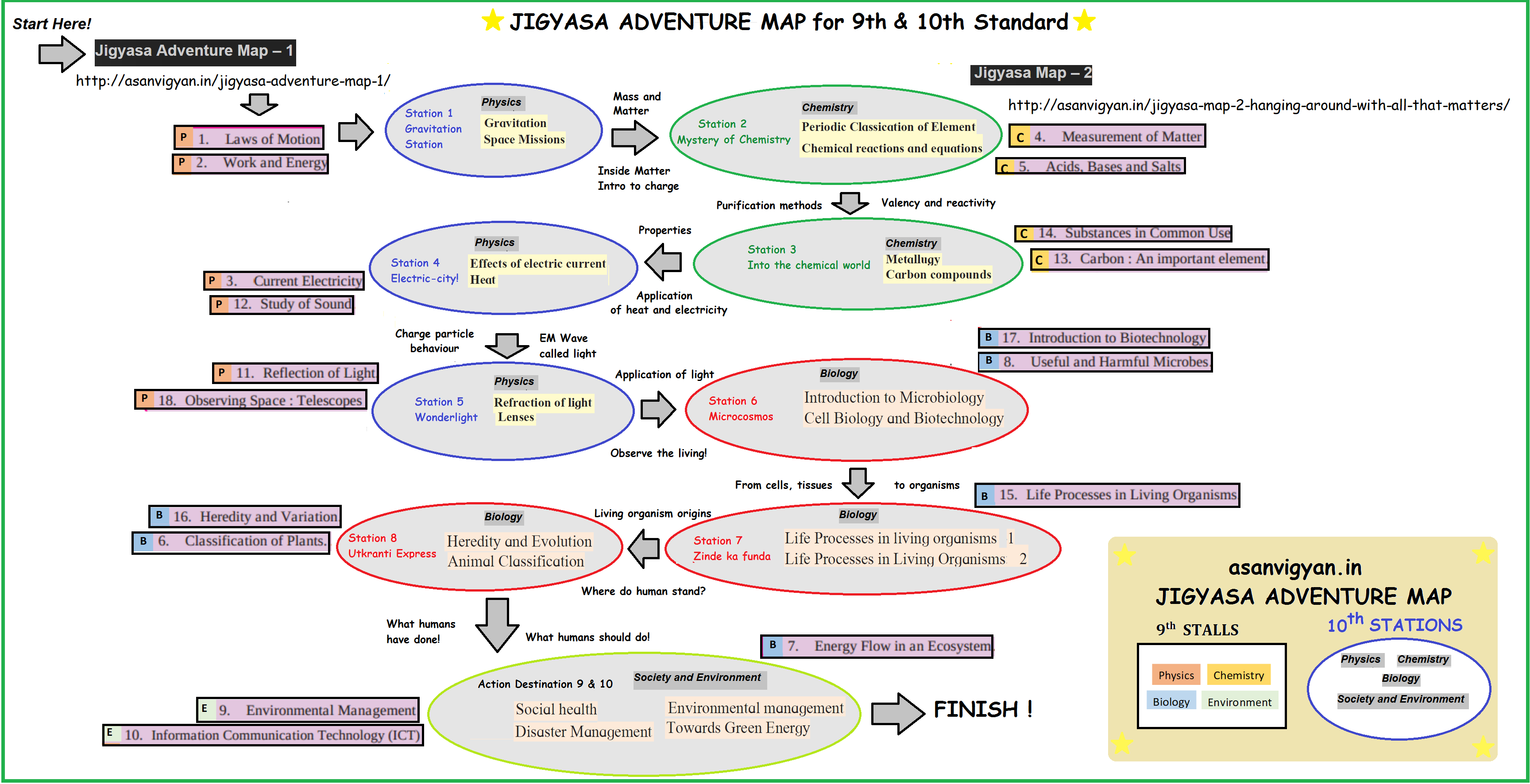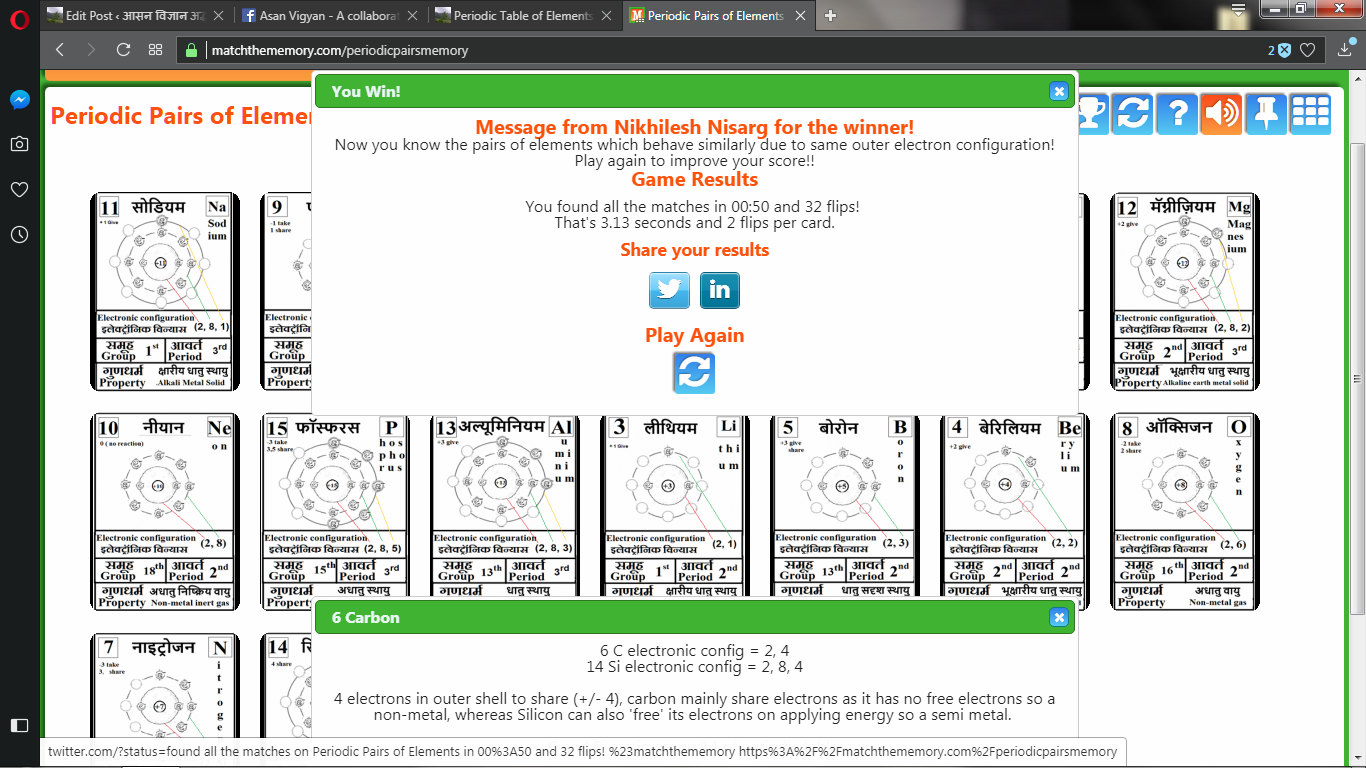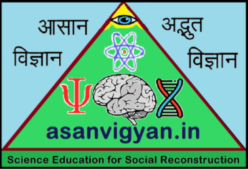Will you find a movie interesting if it shown in disordered bits and pieces without following any time sequence ? No wonder why many kids find science difficult and boring, as the curriculum is not covered in Logical Sequence!
Schools, especially the ones catering to underprivileged sections in vernacular medium, do not try to ponder upon whether sequencing of chapters will have effect on learning science. From my experience, the sequence followed in class is mostly as per the numbers given in the textbook which seems just as disconnected, with some more vague classification like dividing ‘hard’ and ‘easy’ or long and short chapters. Many a times, extremely complex systems of biology like DNA and Evolution are introduced much before more basic concepts like chemistry of carbon compounds. Due to this ad-hoc approach, learners fail to see that DNAs are also made up of carbons, discovery of chemistry of atoms and progress in physics that helped us see them enriched biology, and thus all subjects are interconnected.

So often at the beginning of the course, teachers have to wonder which lesson to take first and what sequence to follow. This is especially even more confusing for Home Schoolers, parents, tuition teachers and education volunteers. Our textbooks need not be arranged in a way that follows Logical Sequence of Learning.
LOGICAL SEQUENCING OF LEARNING IN SCIENCE CURRICULUM
What do we mean by Logical Sequence of Learning ? We agree with Dr Nagarjuna’s (of Homi Bhabha Centre of Science Education) position that, knowledge or rather Gnowledge (herein Growing/Evolving Knowledge) is not just in the content of subjects but also in the connections between them.
We mean to say that “Any new chapter should be connected to the previous chapter and the inter-connections have to be made strong again and again by revision“.
Our role of science explorers and educators is to find Paths of Logic and make it wonderful with a touch of artistic magic for making the journey of science learners more simple, yet wonderful! Now the question arise, is there only one path? No, there may be more than one, but not too many!
There will be only a few paths that follow logical sequence which does not introduce new information abruptly. In fact one of the suggested exercise is finding connections between different chapters during the process of revision and making such connections stronger. Such connections if made strong will eliminate a lot of misconceptions and give the learner confidence to navigate more into uncharted territories.
Logical Sequencing of 9th and 10th std (Maharashtra board)
Given below is an example of Jigyasa Adventure Map, an attempt to bring logical sequencing in the 9th and 10th curriculum of Maharashtra Board. Students can use this map for self learning and teachers can use this tool for assessment and even as a report card for individual students. It will be easier to identify and rectify the gaps in knowledge if we compare answer-sheets with the logical sequence. The curriculum need not be confined in the classroom. Please refer to Jigyasa Adventure Map – 1 for beginning the journey. Bon Voyage!
One would be amazed that there is so much science to learn using just dimensions of length and time! We can progress in this map using Connect, Extend and Challenge strategy. Connect with previous chapter, extend your knowledge by learning current content, and challenge yourself by extending those connections towards new knowledge zones. A quick reference to Harvard education’s Project Zero, Connect-Extend-Challenge will be quite helpful.

In the map given above, contents of 9th and 10th standard subjects are categorized as stalls and stations respectively. The stalls and stations are connected by an arrow sequence. What is written on both sides of the arrow are Connectors and Challengers, the rule is to not take new challenges until previous connections are strengthened. There are enough amazing digital and text book content for learning as well as practical experiments that can be utilized for progressing in the science adventure. For those in Mumbai, an educational picnic to Nehru Science Centre would give a glimpse of many of the stations and stalls in just a day!
Assessment Games!
How to test the strength of knowledge at a given specific topic ? Assessment Games! Each knowledge port has plenty space to cater to learning games that can be re-played again to maintain the strength.
For example, progress in learning at Station-2 Mystery of Chemistry can be periodically tested by playing atomic card memory game.
Login into: https://matchthememory.com/periodicpairsmemory to give it a try and check how good you are in pairing chemically similar elements of the 2nd and 3rd rows of the periodic table!

From this game we can get data about the players ‘total time taken (s)’ and ‘total number of flips taken’.

Every player gets to play as many times as they want to. After the game is over they can roll their mouse over the cards and see matched pairs and see how valency decides the chemistry of periodic pairs of elements. Data collection for evaluating the results has been tested, starting with 17 students of Samta Hindi Vidyalaya, Turbhe, Navi Mumbai.

The improvement seen in the performance is evident with overall reduction in both number of flips and time taken over repeated chances as learners take play more and more.
Passing Conditions:
- In terms of Periodic pairs memory, they also have to more than 5 times get total time taken <60 s and total flips <40.
- The learners will pass the course only if they fill up the electrons table as given below consistently without seeing!

This method of testing can be used to supplement formal exam system, and also to implement evaluation or assessment system that are
- self-paced
- collaborative
- mastery oriented
- gamified
- freely available
Need more ideas to make collaborative games ? Take a peek into Play for Peace website for more on how to integrate non-violence and play during learning.
Making New Connections
After Station-5 Wonderlight, we suggest take a revision back to Station-1 Gravitation Station by connecting with Stall-18 Observing Telescopes. In the revision run, a new connection can be made between Station-3 Into the Chemical World and Station-6 Microcosmos by taking the route of connecting carbon compounds in life and finishing the challenge of learning Chemical Evolution.

This new route highlighted above describes bottom up approach of journey from small molecules to macro-molecular life. It teams along with the previous experimental connection between physics of light for observing life to help establish SYNERGY and INTER CONNECTEDNESS between the physics, chemistry and biology. In our opinion, biology should be introduced strongly only after establishing this synergy triad. The dividends of the new connections will become evident when learners will find the jungle of evolution and species classification in Station -8 Utkranti Express much easier and as a logical extension of chemical evolution and classification of elements and compounds as previously studied in chemistry.
SCIENTIFIC PURSUIT OF WELL-BEING
At the end, a lot of emphasis is to be given on community work and development. The journey of science is not for zombies who sleep walk through the world when it is becoming even more polluted and hard to live. Lets take courage and inspiration from climate change activist Greta Thunberg and global #FridayforFuture movement and wish to empower it with #SundayforScience. It is hoped that science adventures connect us to our core being and all living world, gives courage, extend our knowledge to take high impact actions and therein challenge environmental degradation, bust some arcane myths and modern superstitions, promote nature-human and inter-human co-operation, peace and well being!
Interested in making new connections and taking new challenges ? Please share in comments! Adios!

